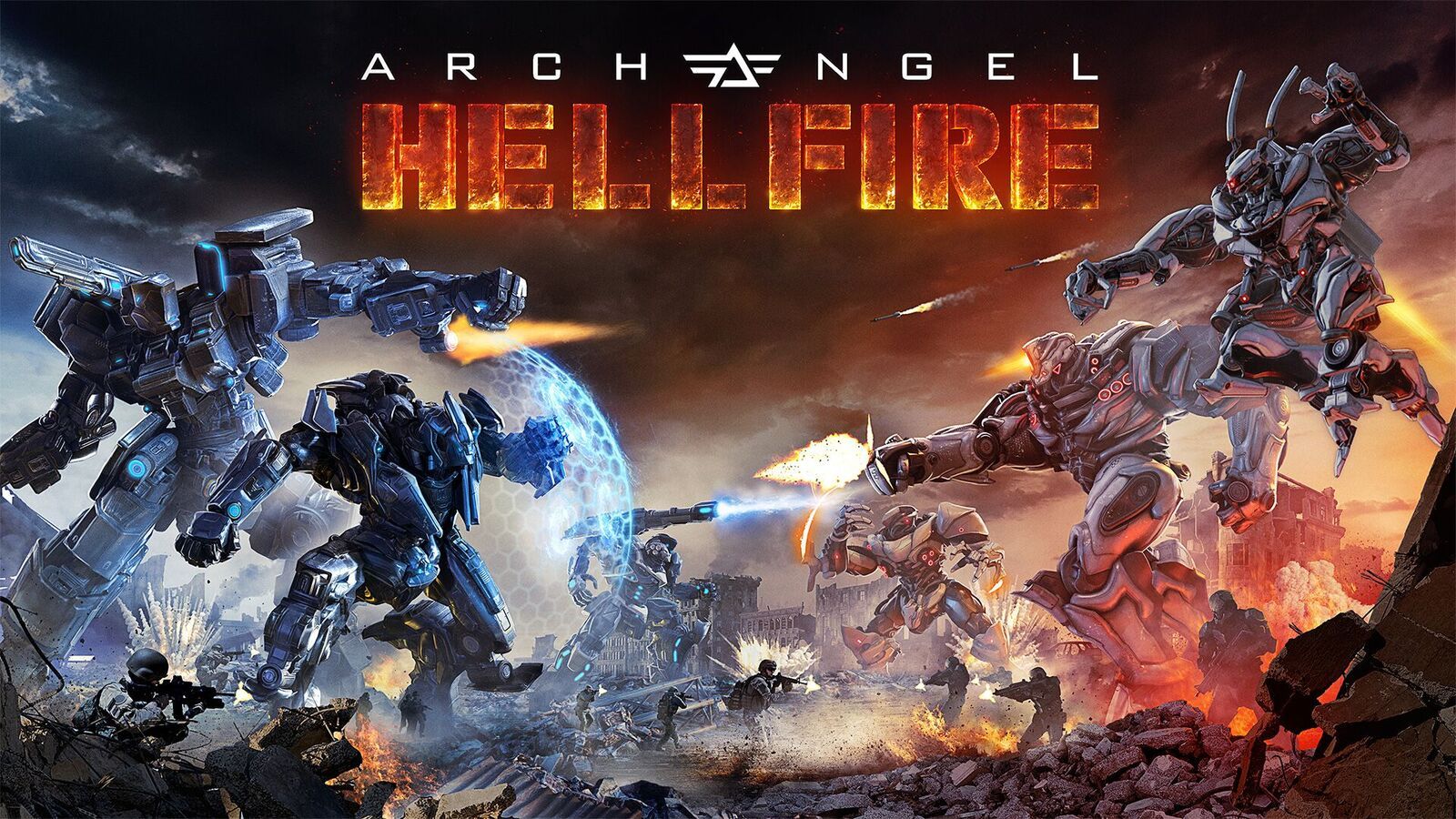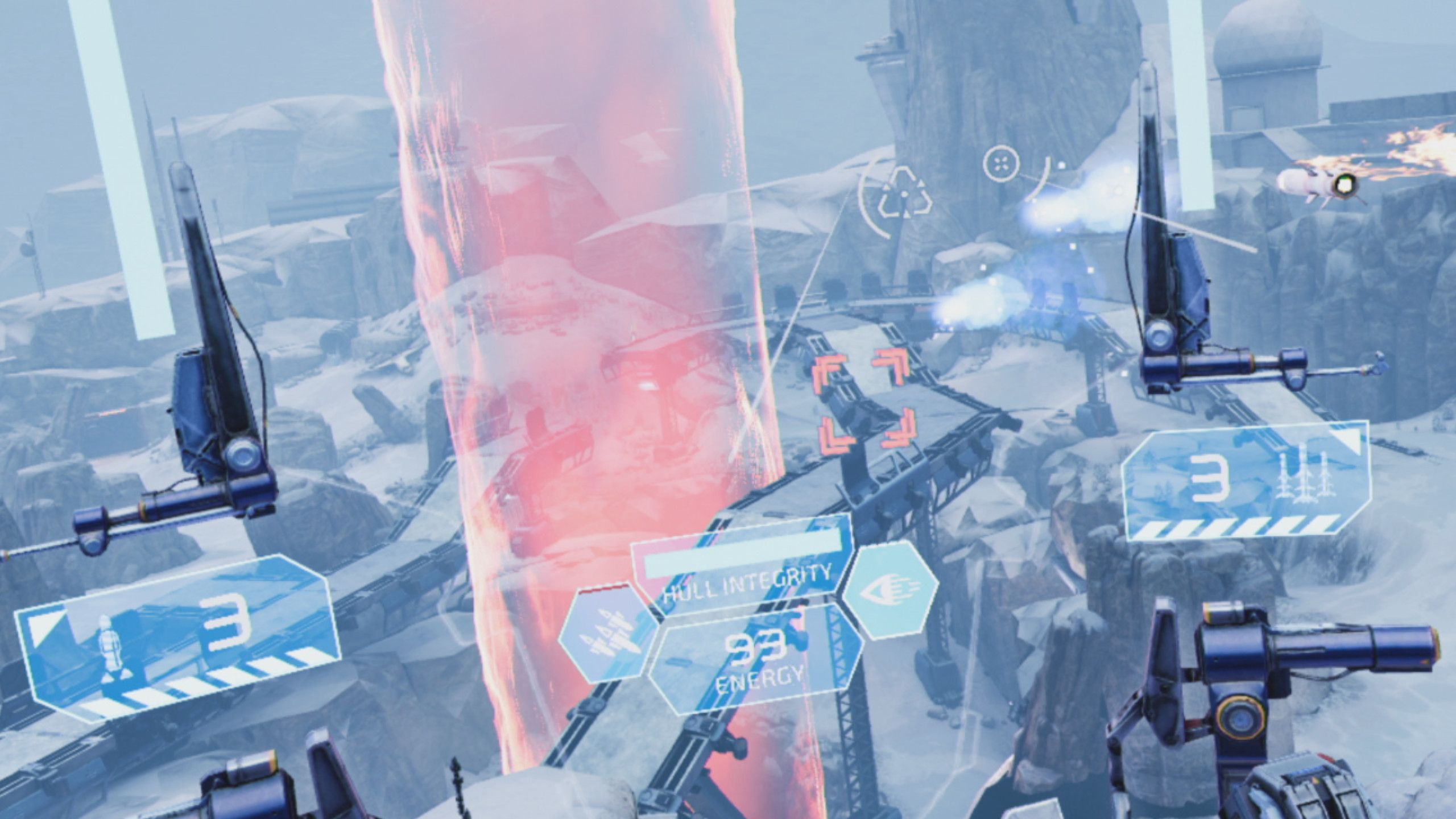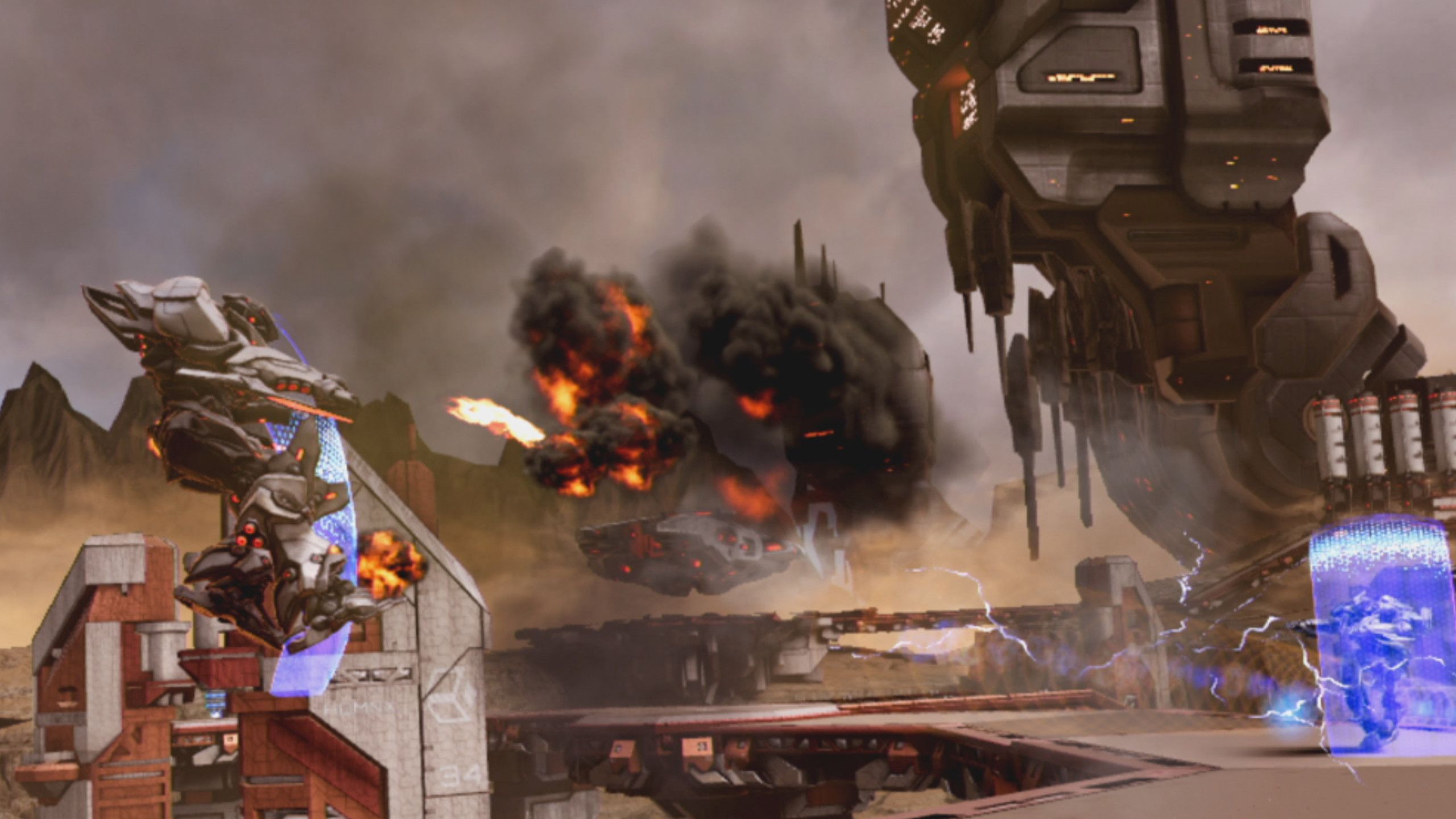As the VR market continues to grow, developers are learning new ways to refine genres and cater the experience to the strengths of virtual reality rather than trying to create a one-to-one mirroring of the same non-VR experience. Archangel: Hellfire is one of the most recent examples that I have seen that has now figured out how to positively impact the multiplayer shooter genre in VR.
A few weeks back, I went hands-on with Archangel: Hellfire at Skydance Interactive's offices in Los Angeles to test out the game's multiplayer and came away with many positive impressions from what I played.
Myself and one of our other writers, Michael Ruiz, took part in Archangel: Hellfire's 2v2 multiplayer matches alongside some members of the game's development team. Initially, the biggest obstacle in my path to learning how to play Hellfire properly dealt with the controls. If you didn't already know, Archangel: Hellfire has you piloting a mech where you can control one weapon in each of your hands. Learning how to aim with two different weapons at once using the Oculus Touch controllers was difficult at first, but after playing a couple matches it started to feel very smooth.
One of the best aspects about Archangel: Hellfire was just how many options and mechanics you have to play with. Since the game is class-based, you have three different mechs to choose from, with each mech having a drastically different design depending on the team you are playing for. This is one of those little details that doesn't make a huge difference overall, but I liked seeing that each team's mechs had vastly different designs rather than simply being palette swaps like in so many other multiplayer games.
With each of Archangel: Hellfire's classes, you are given access to different weapons and special abilities. In typical class-based shooter fashion, the three mechs to choose include a tank that can take a lot of damage but moves slowly, a speedier type that can zip around the map but has low health, and a final class that is sort of a middle ground between the two.
[pullquote]"One of the best aspects about Archangel: Hellfire was just how many options and mechanics you have to play with."[/pullquote]
Where things started to get more interesting with Archangel: Hellfire was when I learned more about the power system that each mech has. This is a bit hard to explain without playing for yourself but, essentially, you can choose to amplify certain elements of your mech by increasing power levels with sliders in the upper portion of your cockpit. When optimizing these skills though, other aspects of your mech will suffer.
For example, you can push your slider that amplifies speed to 100% but, as a result, the ability that steadily builds up your ultimate will drop. To keep everything even, you can leave each of your four sliders at 50%, or you can choose to boost two specific abilities to 100% functionality while dropping others to 0%.
It's this added depth to Archangel: Hellfire that made me really understand how competitive that it could be. Quickly switching your power levels on the fly to aid you in whatever situation that you found yourself in greatly increased the level of competition. I, for example, started using the tank class primarily and then boosted my speed to 100% to give myself as much maneuverability as possible. I'm interested in seeing how higher level competitive matches in Archangel: Hellfire play out because of this system.
[pullquote]"Skydance Interactive...worked extremely hard to ensure that the game would be incredibly comfortable for those who experience VR sickness."[/pullquote]
More than anything else though, the one thing that I appreciated the most about Archangel: Hellfire was just how comfortable of an experience it was in VR. I'm someone who can easily get sick in virtual reality depending on the game and the genre. Guerilla Games' PS VR title RIGS, for example, is to this date the one VR game that made me feel the most nauseous. Coming into Archangel: Hellfire, I was worried that those same ill feelings would reappear since both games are focused around mechs, but I luckily never felt sick at any point. Skydance Interactive's developers told me that they worked extremely hard to ensure that the game would be incredibly comfortable for those who experience VR sickness, and I for one really appreciated it.
At its core, Archangel: Hellfire is your standard arena shooter in VR, but the more matches that I played, the more I realized how much depth to it there was. Having the accessibility to bring in new players while simultaneously catering to those looking for a deeper multiplayer experience is difficult, but I think Skydance Interactive has found a way to accomplish both tasks.
Currently, Archangel: Hellfire is available to play in early access on PC via Steam, but it will be fully launching later this month on July 17.



